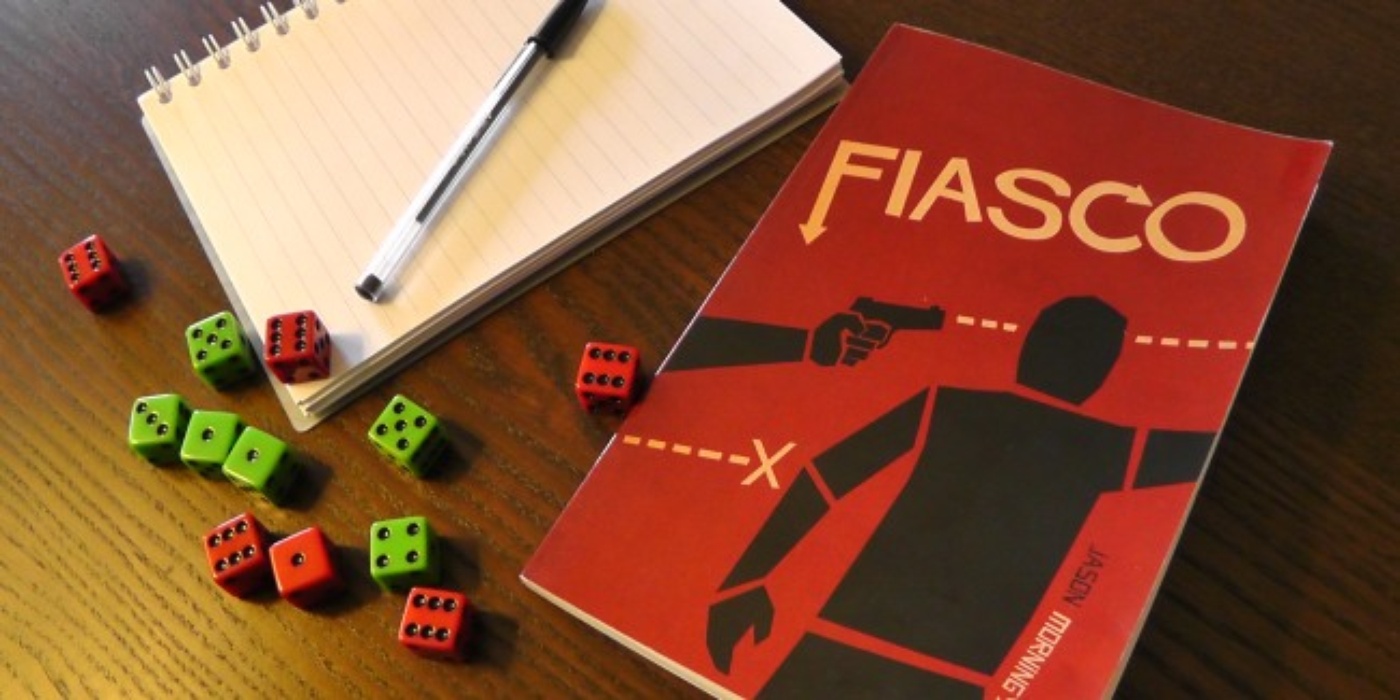By: Catherine Acosta
For the TTRPG unit, we (steph, ben, jason, kay, liese and i) decided to play Fiasco. I was most intrigued by GM-less games and I liked the 2 act structure because we had limited time and I wanted to get a good sense of the game. Since its original release Fiasco has been upgraded to include more pieces than just its rule book. The newest version has replaced the die and index cards with cards that describe all elements which I certainly think was a necessary upgrade. Set up and play are somewhat difficult to understand just from the rule book, and we greatly benefited from YouTube videos that guided us through.
Fiasco uses dice to allow players to select traits of the characters they will assume including their relationships, needs, any objects they may have, and the specifics of their location within a chosen playset. There are also insta-play sets where you do not get to choose, we considered using these to jumpstart playtime but found that we enjoyed having more influence over our characters and that allowed us to role-play better. However, even at the MAAD center, we struggled to find enough six-sided dice to play with. The game requires 4 dice per person and half must be of a different color. To play with 5 people we needed 20 dice and ended up using an online dice generator, which did not completely solve our problem as the dice are also used physically later on during gameplay.
Fiasco allows players to create their own movie. The characters they build, how they relate to one another, and their motives come together as players act out scenes of their film. Acting out our Real Housewives of Hyde Park drama was incredibly fun and this game easily lends itself to creating high-stakes conflicts that are truly engaging. However, I found some of the mechanics of turn-taking a bit confusing. Once all characters are created, players begin directing their scenes. A player chooses to either “establish” or “resolve” a scene and then at any point in the scene players decide if the scene is going well or poorly for that player. This is done by selecting a die of either the “good” or the “bad” color and placing it in front of the player whose turn it is. (This is when the dice generator was not enough.) Then after your turn, you pass the die you were given to the next person. These dice are kept and used to determine what elements will be added to the plot turning the “tilt”. These elements kind of took away from the role play and halted our acting. The decision-making process kind of requires you to “break character” and think outside of the actual gameplay.
We were only able to get through Act 1 and explored some of the intermission “Tilt” phase but did not get to see the effects of it as we did not continue to Act 2. While this was my first time playing a TTRPG, I think I would prefer a game that has tangible consequences at each stage. While in its entirety it is still on the shorter side for a role-playing game, there is no natural pause-point that gives you a complete experience.
Act 2 proceeds similarly to Act 1 except for passing your dice to the next player (you keep them all this time!). It concludes after everyone has done 2 scenes and then you proceed to the Aftermath when you describe a kind of “5 years later…” montage for your character’s life after the movie you all created. I don’t love that you have to complete 2 scenes each. With 5 players that is 10 scenes in each act, and we found that we moved through actions quite quickly, and sometimes adding another scene felt forced and unnecessary. I would prefer it if some of the elements of the conclusion were more dependent on the playset chosen and not completely left up to chance. This would give players a more concrete sense of the consequences for their characters.
Overall, I had a lot of fun playing Fiasco. But, I do think that was largely due to the friends I played with. I expect that the new version of Fiasco has resolved most, if not all, of my issues with its mechanics.
